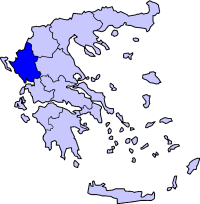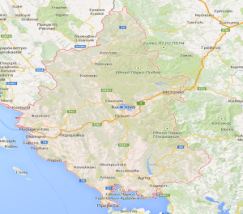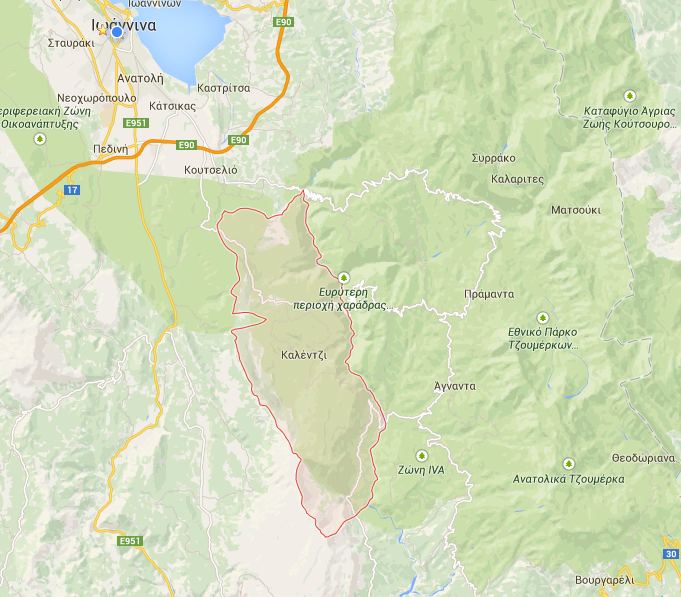
Monuments of Epirus
Katsanochoria
Perfecture of Ioannina
St Nicholas Strategopoulou Monastery (alternatively called Diliou Monastery)
The Monastery of St Nicholas Strategopoulou (or Diliou) is situated on the western part of the Island of lake Pamvotis, within a small distance from Philanthropene Monastery.
Most likely, it was established in the 13th century, founded by members of the Strategopoulos family, that branch of the Constantinopolitan family that resided in Epirus, having arrived there as refugees, after the city had fallen in 1204. Its members held high offices and played a determining role in Ioannina. Not much information has been saved as regards the foundation and the early years of the Monastery. A dedicatory inscription, written within a red rectangular frame over the main entrance of the church, has been preserved. Its rhyming Decapentasyllabic verse (an iambic verse of fifteen syllables) is worthy of note. The inscription refers to the iconographic decoration of the church, which took place in 1542/3, paid for by the monks Neophytos and Sophronios.
The monastery consists of its Catholicon and a two-level monastic cell, incorporated in the church’s western side. There is also a yard and some remains of other monastic cells. Of this monastic complex, today, only the catholicon survives. It is a single-nave church with a semi-circular arch. The temple’s interior is fully covered with 16th century murals (1542/3), magnificent samples of art created by an artist of high caliber, whose name remains unknown.
The iconographic program comprises murals interwoven with a mild, elegant and noble spirit, which lacks extreme severity. The anonymous painter of Deliou Monastery demonstrates his preference for archaic stylistic motifs. It is probably the first case of post-Byzantine art in which the painter has efficaciously acculturated pre-existing motifs. The iconographic circle referring to Virgin Mary is worthy of a special note. These murals are splendid representatives of post-Byzantine art created by a mature and solid artist, characterized by high professionalism and broad education. Together with those in Philanthropene Monastery, these murals are a reference point for the study of the “school of North-Western Greece” and, generally, of the art of the 16th century, in which great and noteworthy movements in mural paintings emerged.
Images














